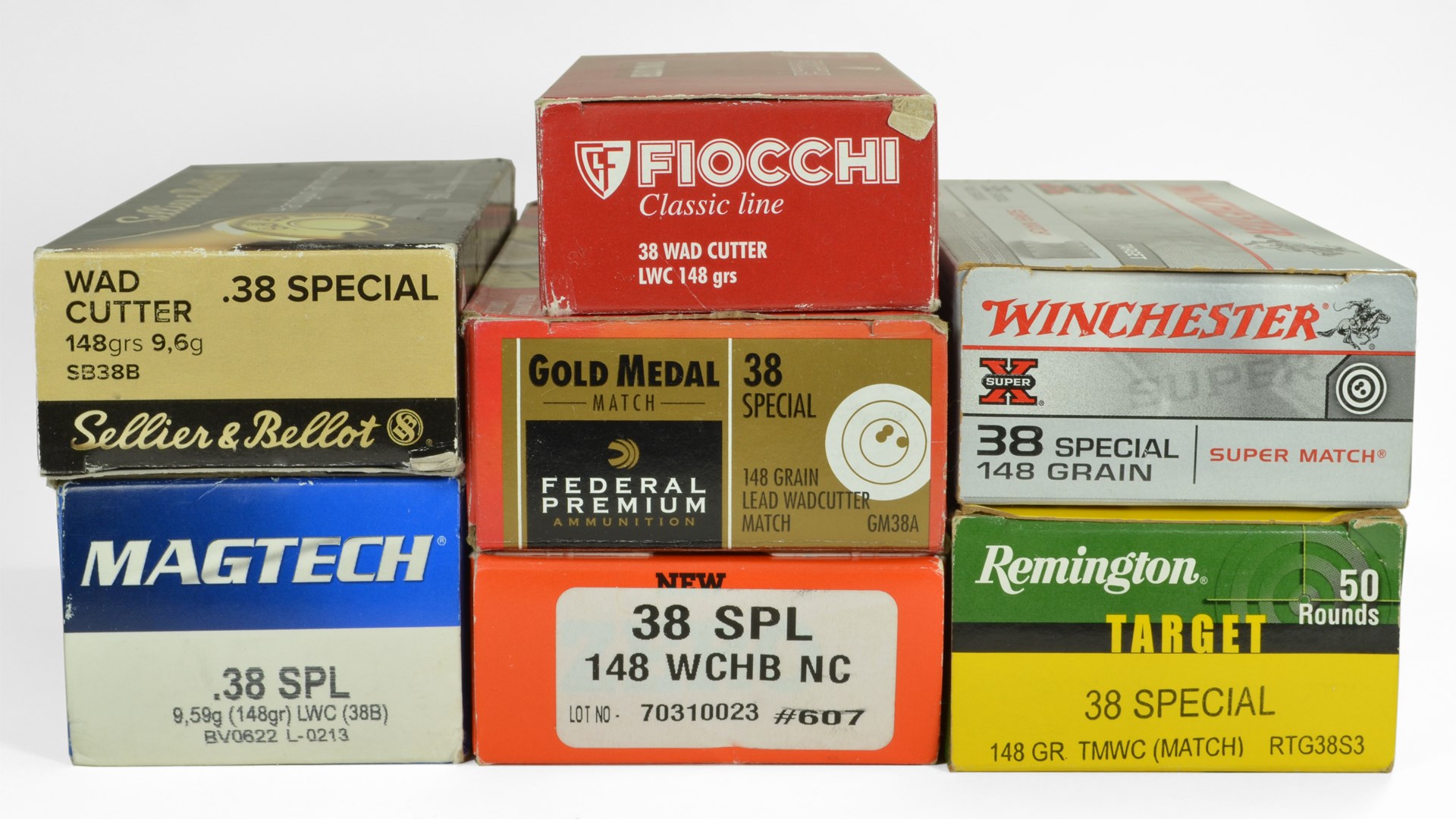One of the most accurate handgun rounds is the .38 Special wadcutter. It is a common round used in many formal competitions like NRA Precision Pistol (Bullseye) and NRA Police Pistol Combat (PPC) competition not only because of its fine accuracy, but also in how cleanly the flat-nosed projectile punches paper. This ammunition has won innumerable matches for decades.
Wadcutter bullets are cylindrical shaped with a flat nose and base. A common variation of the wadcutter is a hollow base. The idea behind a hollow base is that the gas pressure from the burning propellant will expand (obturate) the base, and this helps the bullet to fully engage the rifling. The hollow base also means the bullet is front-heavy, which improves aerodynamic stability. The hollow-base wadcutter (HBWC) is the most common design loaded in factory .38 Spl. wadcutter ammunition.
Most ammunition manufacturers that make .38 Spl. ammunition produce wadcutter loads. I looked at the accuracy of seven brands of factory-loaded .38 Spl. wadcutter ammunition: Federal, Fiocchi, Magtech, Remington, Sellier & Bellow, Winchester and Zero. All wadcutter bullets were 148 grains and a HBWC design.
I used a Smith & Wesson Model 686 Plus .357 Mag. revolver with a 7″ barrel. The gun was held in a Ransom Rest, and the target was at 25 yards. The Ransom Rest holds the gun in the same position for every shot, eliminating human error. I fired a single 20-shot group, which gives a better picture of the dispersion of shots than firing several smaller-shot-count groups, which has been the traditional method.

The results showed quite a difference in what my revolver liked. The smallest group was produced with the Remington ammunition, putting all 20 shots in just 1.16″. The Remington wadcutter has a reputation for producing excellent accuracy, and this gun certainly liked it. The next smallest group was made with Magtech ammo at 1.48″, followed by Zero ammo at 1.76″ (see the table). The largest group was produced with Sellier & Bellot at 3.47″. It’s the only group that exceeded 2.5″.
Velocity ranged from a low of 661 f.p.s., produced by the Fiocchi round, to a high of 799 f.p..s from the Magtech round. The Fiocchi round was the only one below 700 f.p.s. in my long 7″ barrel.

Every gun has its preferences, and I’ve seen considerable variation in my revolvers. For example, the excellent-shooting Remington HBWC load was not as outstanding in my other revolvers. My S&W Model 67 revolver in .38 Spl. with a 4″ barrel shot a 24-shot group of 5.09″ with the Remington wadcutter. This was, by far, the largest group made by factory wadcutter ammo that I have fired in that gun. My Ruger New Model Blackhawk .357 Magnum with its 6.5″ barrel turned in a 3.96″ 24-shot group with the Remington ammo. This group size is about average for that gun. These guns were also fired in the Ransom Rest.
You never know how well a gun will like the ammunition until you try it, and that’s the moral of the story here. The 7″ S&W 686 Plus shoots well with several types of ammunition, including several of these wadcutters shown above. Wadcutter bullets can shoot very well in many guns, but, like any ammo, guns might show preferences for particular brands. If you’re looking for accurate .38 Spl. ammunition, try wadcutters. And because they are usually traveling slower than other .38 Spl. rounds, they offer mild recoil as a bonus.
Read the full article here

